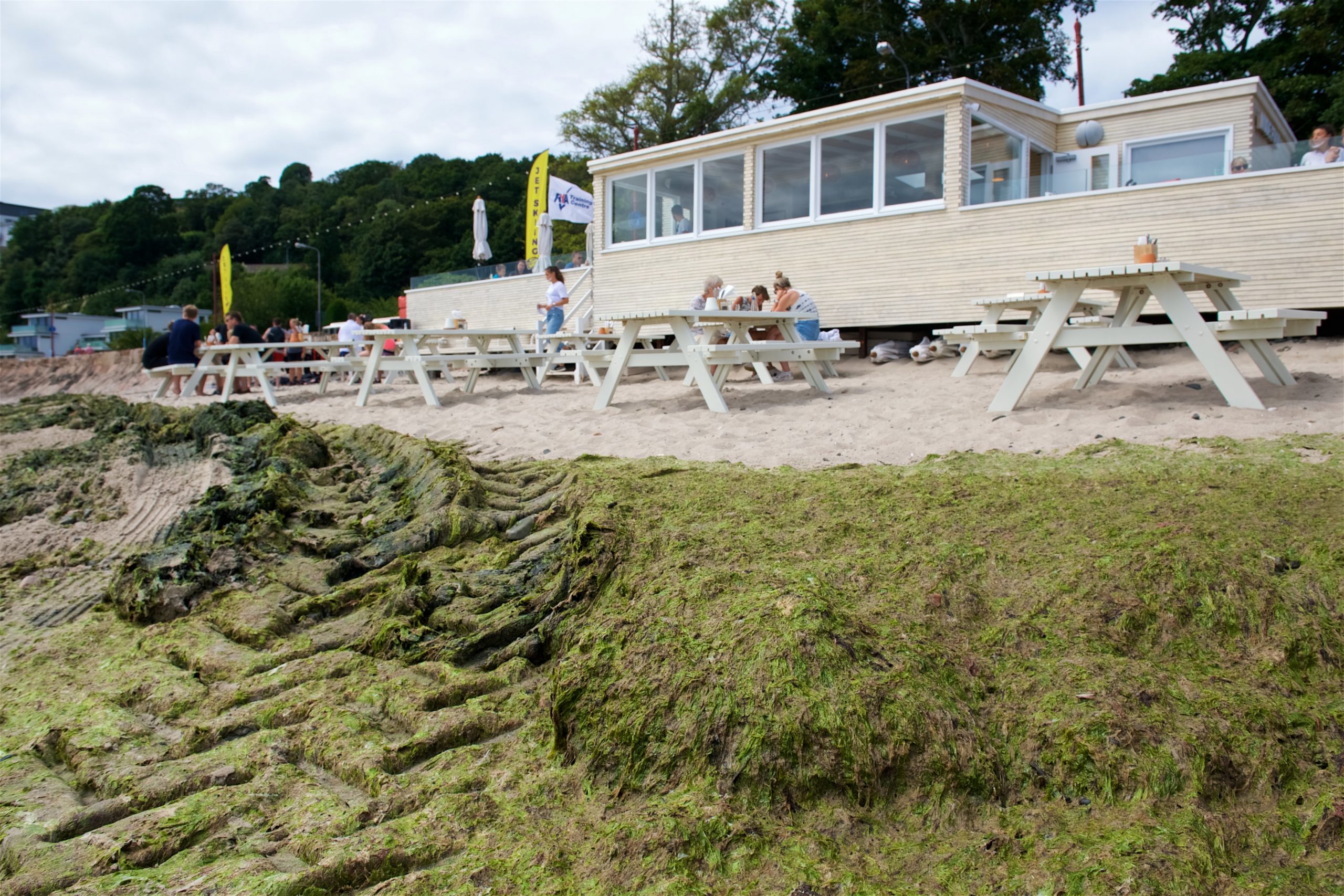In response to a written question from Deputy Rob Ward, Deputy John Young has also said that joint work between farmers, Jersey Water and Natural Environment has helped to lower the level of nitrates in Jersey’s natural water flows, which is believed to be a key contributor to the build-up of the slimy weed.
The annual bloom of sea lettuce in the south-facing bay has long been considered a nuisance by Islanders, and the minister’s response indicates that 2,800 tonnes were removed between June and September.
Deputy Young’s response says that nitrates in both natural streams and from the Bellozanne plant have contributed to the problem.
His answer says: ‘Officers across my departments in Infrastructure, Housing and Environment have recognised the importance of reducing levels of nitrates for some time, particularly given that the bay receives run-off from a large proportion of the Island and the potential negative impact on drinking-water standards and health, especially for households on private boreholes and wells.
‘Relevant stakeholders, including potato and dairy farmers and officers from Jersey Water and Natural Environment, have worked closely together in the Action for Cleaner Water Group for some time to reduce levels of nitrates in water across the Island.
‘This includes streams and groundwater entering the bay and, by default, the quality of water being treated by the waste-water treatment works. Their collaborative work has been very successful and average nitrate levels in streams and groundwater have reduced by one third during the past 20 years.’
The Deputy adds: ‘The water-waste treatment works will be replaced in 2024. The new facility will result in lower levels of total nitrogen entering the bay and increased volumes of treatment during storm conditions, leading to less shock loading of total nitrogen.
‘These improvements will help to limit the annual volume of this nuisance weed.’






